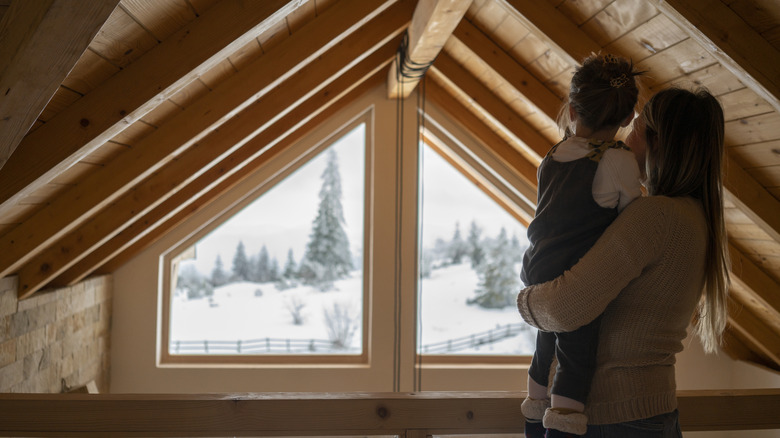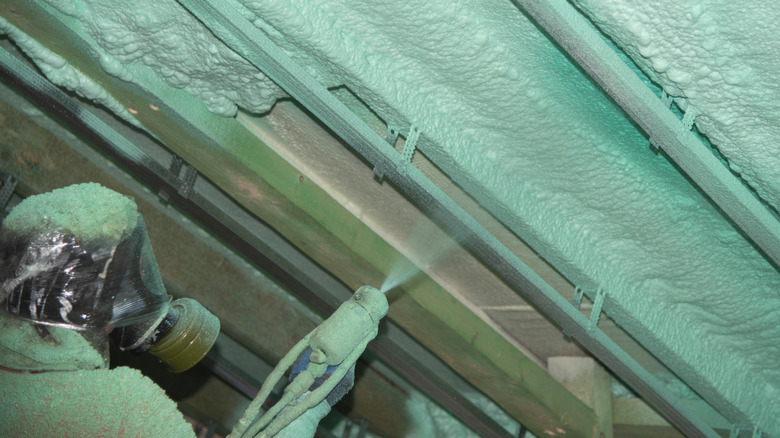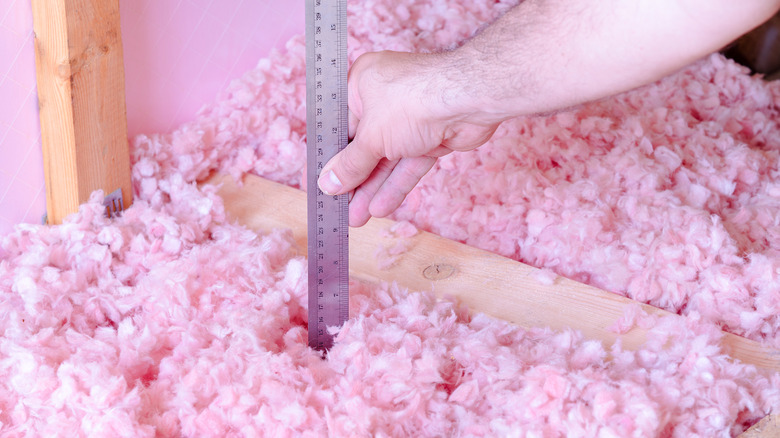Best Ways To Insulate Your Attic In Winter
When winter comes around, the temperature drops but your energy bills seem to move in the opposite direction, mostly because of prolonged heater usage. Insulating your home is a great way to prevent heat loss and reduce energy costs. Since the attic is a major gateway for escaping heat, insulating this part of your home first is a good idea. Beyond the energy-related benefits, proper attic insulation lowers the risk of ice dam formation on your roof and reduces the strain on your heating system, as it doesn't have to keep up with dropping indoor temperatures. In turn, this welcome break helps prolong the HVAC system's lifespan and efficiency.
Choosing the best way to insulate your attic boils down to a few factors. First, consider the R-value, which quantifies thermal resistance and shows how effective a material is at stopping escaping heat. Materials with a higher R-value are ideal. Additionally, factor in your local climate, the availability of the material, and its ease of installation. Crucially, you should know how much it will cost to insulate an attic with your chosen method. If you have no budget constraints, spray foam is the best way to go, since it provides excellent R-values and covers all the structural members inside the attic to prevent thermal bridging. Loose fill insulation is equally effective at keeping heat in, but is a more budget-friendly alternative to spray foam.
Spray foam insulation
Spray foam insulation consists of polyurethane foam, which is sprayed over the area you want to insulate. It sets there, creating an airtight envelope that seals the attic. This method is one of the best because it creates an air seal that closes off all crevices and coats the joists to eradicate thermal bridging — a phenomenon where heat flows through the wooden structure of the attic and contributes to energy loss. This air seal also prevents cold air infiltration and drafts in your house, ensuring more efficient energy use. And because the seal keeps moisture out, you won't need to worry about mold in your attic anymore. Additionally, rodents will be a story of the past, as their tiny highways will be closed, and the foam contains boric acid, which repels them. Spray foam also has the highest R-value among different insulation types, averaging at about R-6 to R-7 per inch — compare that to the R-3 per inch you'd normally get from batt.
Admittedly, spray foam insulation is expensive. The costs can also add up because spray foam must be installed by a professional. However, these upfront costs shouldn't be a deterrent if you want long-term energy savings. The air seal this insulation method creates can lead to a whopping 15 to 50% drop in your heating bills, saving you a significant chunk of money over time. Combine that with spray foam's long lifespan, and you're looking at one of the most cost-effective insulation methods you could ever get for your attic.
Loose-fill insulation
Loose fill is another great type of attic insulation. Also known as blown-in insulation, this method involves blowing granules of loose fibers into tight spaces using specialized equipment. It is split into three types depending on the material used: cellulose, rock wool, or fiberglass. This method is great for the attic because, like spray foam, it covers the joists and holes around them, preventing thermal bridging. Loose fill is also flexible enough to fit into the odd and awkward spaces attics are known for, offering complete insulation coverage. The installation is easy and fast, and it shouldn't take you more than a few hours to insulate the attic. Since you don't need to hire professional installers, your upfront costs will be lower with this method. That said, you'll need to rent a blower to complete the installation.
Blown-in insulation also has high R-values compared to the popular blanket or batt alternatives. And while the R-value can decrease over time due to settling, it's easy to solve this problem by installing a bit more loose fill than needed and not disturbing the material once it's in place. When installed properly and left alone, your blown-in insulation should retain its shape and efficiency for up 20 years. Applying an airtight seal before insulation would equally reduce the impact of settling on the R-value. This airtight seal also helps prevent moisture penetration and mold, which can be a concern when you use cellulose for your insulation.


